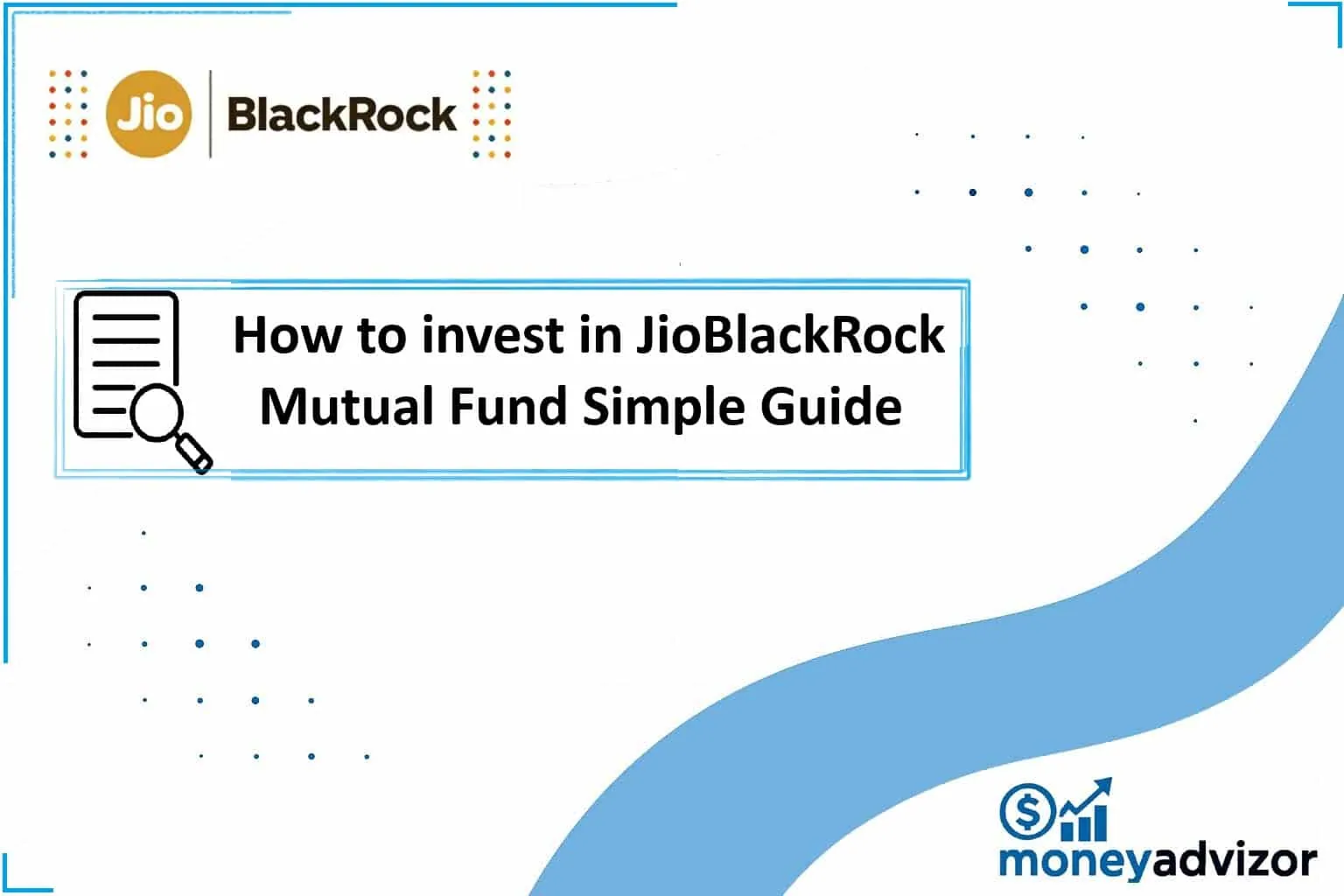The arrival of JioBlackRock Mutual Fund, a joint venture between India’s Jio Financial Services and global investment giant BlackRock, has generated significant buzz. If you’re looking to invest with this new powerhouse but feel unsure where to start, this straightforward guide is for you. We’ll walk you through the entire process, making it easy to understand even if you’re a complete beginner.
Why Consider JioBlackRock Mutual Fund?
- Powerhouse Partnership: Combines Jio’s vast reach and digital expertise in India with BlackRock’s unparalleled global asset management experience and technology (notably their Aladdin platform).
- Focus on Passive Investing (Initially): Their first offering, the JioBlackRock Nifty Next 50 Index Fund, is a passive fund aiming to track the Nifty Next 50 Index. This means lower costs and transparent, rules-based investing.
- Direct Plan Only (Currently): They currently offer only Direct Plans, meaning you invest directly with the fund house, bypassing distributors. This results in lower expense ratios (fees), potentially boosting your returns over time.
- Digital-First Approach: Expect a strong emphasis on user-friendly online and app-based platforms for investing and tracking.
- Accessibility: Low minimum investment amounts (starting at Rs. 500) make it accessible to many investors.
Important Note: As of now (based on publicly available information), JioBlackRock Mutual Fund offers only one scheme: the JioBlackRock Nifty Next 50 Index Fund. This guide focuses on investing in this specific fund. Always check their official website (www.jioblackrockamc.com) for the latest product offerings.
Investing in Jio Mutual Funds: A Step-by-Step Guide
Jio BlackRock Mutual Fund, a joint venture between Jio Financial Services and BlackRock, offers a range of mutual fund schemes for Indian investors.
Here’s how you can invest in Jio Mutual Funds Online:

1. Open an Account:
- Download the JioFinance App: Available on Google Play and the App Store, the JioFinance app is the primary platform for accessing and investing in Jio Mutual Funds.
- Sign-up/Login: If you are a new user, you will need to register and create an account. Existing users can log in with their credentials.
- Complete KYC: The app will guide you through the mandatory Know Your Customer (KYC) process, which involves verifying your identity and address using documents like your PAN card and Aadhaar card.
2. Explore and Select Funds:
- Browse Schemes: The app provides a user-friendly interface to browse through the various Jio Mutual Fund schemes available, including debt funds, equity funds, hybrid funds, and index funds.
- Use the AI-powered Recommendation Engine: Leverage BlackRock’s Aladdin platform integrated within the app to get personalized fund recommendations based on your investment goals and risk profile.
- Research Fund Details: For each scheme, you can access comprehensive information like the investment objective, fund manager details, expense ratio, past performance, and risk factors.
3. Make Your Investment:
- Choose Investment Mode: You can invest through a lump sum amount (one-time investment) or opt for a Systematic Investment Plan (SIP).
- Select Payment Method: The app supports various payment methods, including UPI, debit cards, net banking, and auto-debit.
- Complete the Transaction: Follow the on-screen instructions to complete your investment.
4. Track and Manage Your Portfolio:
- Real-time Portfolio Dashboard: The app provides a real-time portfolio dashboard to track the performance of your investments.
- Manage Transactions: You can easily pause, switch, or redeem your investments with a single click within the app.
- Access Reports: Generate detailed performance reports and risk insights to help you make informed investment decisions.
Here’s how you can invest in Jio Mutual Funds Offline:
Whether online or offline, you’ll need to provide:
- Personal Details: Name, PAN (Mandatory), Date of Birth, Contact Details (Address, Email, Mobile Number – must be registered).
- Bank Account Details: Crucial! Provide your active bank account number, IFSC code, account type, and branch. All redemption proceeds will be credited ONLY to this registered bank account. Submit a cancelled cheque leaf or a copy of your bank passbook/first page for verification. Double-check the details!
- Nomination Details: Highly recommended. Specify who should receive your investment proceeds in case of your demise. Provide their name, relationship, address, and guardian details if nominee is a minor.
- Folio Number (if existing): If you already have an investment folio with JioBlackRock Mutual Fund, quote it. Otherwise, a new folio will be created.
- Investment Details:
- Scheme Name: JioBlackRock Nifty Next 50 Index Fund
- Plan: Direct
- Option: Growth
- Amount: For Lumpsum (e.g., Rs. 500, Rs. 10,000 etc.) OR SIP details (Amount, Frequency – Monthly/Quarterly, Start Date, Duration/Bank Mandate).
- Payment Mode: Cheque/DD details (if offline) or net banking/UPI (if online).
- Mode of Holding: Single, Joint (up to 3 holders), or Minor.
- Signature(s): Sign as per the mode of holding. Signature(s) must match the bank records.
- Submit the duly filled form with cheque/DD and supporting documents (KYC if not done online, cancelled cheque) to an Official Point of Acceptance (OPA). Find the list on www.jioblackrockamc.com/disclosure.
Important Considerations:
- Investment Goal: Clearly define your financial goals (e.g., retirement, child’s education, wealth creation) before selecting a fund.
- Risk Tolerance: Assess your risk appetite and choose funds that align with your comfort level.
- Expense Ratio: Pay attention to the expense ratio of the fund, as it can impact your overall returns.
- Direct vs. Regular Plans: Jio BlackRock Mutual Funds offer direct plans only, which have lower expense ratios compared to regular plans, as they eliminate intermediary commissions.
Key Things to Remember:
- Cut-Off Time is 3:00 PM: This is critical!
- For your purchase (lumpsum or SIP) to get the same day’s NAV, your valid application must be received AND your funds must be realized (credited to the fund’s account) by 3:00 PM on a business day.
- Applications/funds received after 3:00 PM get the next business day’s NAV.
- Redemptions received by 3:00 PM get the same day’s NAV; after 3:00 PM, the next day’s NAV applies.
- Demat or Statement of Account (SOA): You can choose to hold your units in:
- Demat Form: Like shares, held in your Demat account (NSDL/CDSL). Specify DP ID and Client ID when applying. Requires a Demat account.
- Statement of Account (SOA): Physical or electronic statement issued by the Mutual Fund. No Demat account needed.
- Monitor Your Investment:
- Track the fund’s NAV daily/weekly on the AMC website, AMFI (www.amfiindia.com), or financial news portals.
- Review monthly portfolio disclosures and risk-o-meter updates on the AMC website.
- Check your CAS regularly.
- Systematic Plans (SIP/STP/SWP):
- SIP (Systematic Investment Plan): Best for disciplined, long-term wealth building. Set it up easily online through the platforms mentioned. You can also use Top-Up and Pause features.
- STP (Systematic Transfer Plan): Transfer fixed amounts regularly from this fund to other JioBlackRock funds (once available). (Min Rs. 100, Min 6 installments).
- SWP (Systematic Withdrawal Plan): Withdraw fixed amounts regularly from this fund. (Min Rs. 500, Min 6 installments).
- Redemption (Selling Units): You can redeem any amount or number of units online (preferred) or via physical form at an OPA. Proceeds are typically credited to your registered bank account within 3 business days (T+3). Delays beyond this may incur 15% p.a. interest payable by the AMC.
- Contact for Help:
- JioBlackRock AMC: Website: www.jioblackrockamc.com | Phone: +91 22-35207700 & +91 22-69987700 | Email: service@jioblackrockamc.com
- Registrar & Transfer Agent (RTA – CAMS): Website: www.camsonline.com | Phone: 1800 425 7255 / 1860 425 7255
- Investor Relations Officer (IRO): Mr. Manish Kanchan (Details on AMC website)
Disclaimer: Mutual fund investments are subject to market risks. Please read the scheme information document carefully before investing. It is also recommended to consult a financial advisor for personalized guidance.




